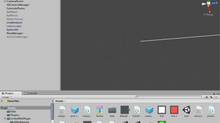Generative Music | Shepard Tone & Hans Zimmer, In C (W1)
(1) Terry Riley's In C
I listened to a few of "In C" performances. I personally like the versions with non-western instruments / elements. One of these is a performance at Tate Modern conducted by André de Ridder.
Coming from Indonesia, I was curious if there was a rendition of "In C" in a pentatonic scale. I found one video, but I am not sure if this is a proper performance of "In C". It does not seem like the individual players make their own phrase choices. Regardless, I really enjoyed this performance:
(2) Generative Music Project: Shepard Tone
I first heard of Shepard tone from a Vox video on Hans Zimmer's score for Dunkirk.
TLDW (too long don't watch) version: Shepard tone is a sound illusion that seems to endlessly go higher or lower, like Penrose stairs.
The illusion created by playing together a loop of 3 (or more) tones separated by an octave. As each tone goes higher or lower, the higher tone gets quieter, and the lower tone gets more audible.
Shepard tone is generative in its creation method: there is a set of procedures to follow to create the illusion. There are many code-based projects that generate Shepard tones. I particularly like this one, because you can play multiple illusions, ascending and descending, at the same time: https://mynoise.net/NoiseMachines/shepardAudioIllusionToneGenerator.php
I like Shepard tone because I react so viscerally to it. Hans Zimmer uses it to create moments of prolonged suspense and toy with my emotions. I also get sick from hearing both ascending and descending tones at the same time. It's an awesome illusion.
Bonus: Tidal Orchestra
Also from Vox's explainer video, I found out that Hans Zimmer remixed Radiohead's "Bloom" for BBC's Blue Planet II.
I think it's ingenious of Mr. Zimmer to use a generative technique to simulate how water and waves move in the ocean.
Here's a quote from Vox's description:
If you listen closely enough to Radiohead and Hans Zimmer’s rework of “Bloom” for Blue Planet II, you can hear a really fascinating orchestral trick at work. They call it the “tidal orchestra” — it’s a musical effect created by instructing each player to play their notes only if the person next to them isn’t playing. The result is a randomly swelling and fading musical bed for the entire series that captures the feeling of ocean waves. It’s a captivating way to score a soundtrack for the ocean — but it also fits in with a long history of capturing randomness in music composition.
I find it interesting that you can make a non-generative score (sort of) generative via generative performance techniques.












